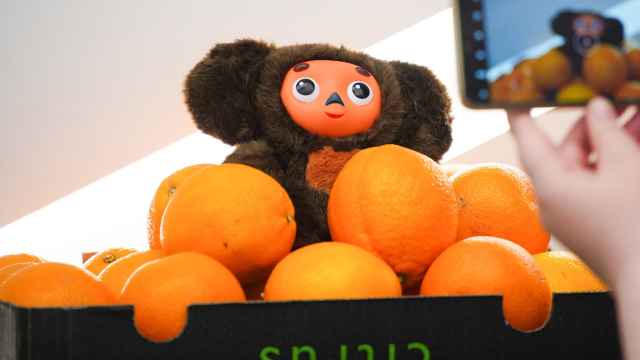Sasha, whose number I had found in Iz Ruk v Ruki, sells python skins and began explaining the address. She turned out to be in the house opposite from mine.
“We only have a brown and a black one left,” Sasha said, explaining that they had sold a lot recently. The price was listed at $80 in the ad, and she confirmed that that was right but that it was the price per meter.
The snake skins she has are three meters in length, which is not short for a species but neither overly long. There are 17 different types of python, a chorus of charming, or sinister names if you are the type to be scared of snakes who can eat you whole, like Bennett’s white-lipped python, the pigmy, the children’s, the spotted, the reticulated and the Borneo short-tailed.
If you follow snakeskin fashion then you will know that the craze for it peaked in 2007 when the likes of Kylie Minogue and Eva Longoria were seen hauling round huge bags, Chanel and Prada, made from python. This caused some outcry with animal rights activists explaining how hunters kill the snakes for their skins as if they were auditioning for the role of Samuel Jackson in “Snakes on a Plane.”
To ensure that they get as much skin as possible, it is common for hunters to simply nail the snake to a tree, then stick a hose down its neck and blow it up big. After peeling the skin off, they throw away the snake, sometimes still alive. And all for a pair of Jimmy Choo shoes.
A U.S. python skin importer unconvincingly reassures buyers that “talk from various animal rights activists … that all python skins are hunted and killed alive for this skin” is untrue because anyone who has traveled “could possibly have eaten BBQ python on a stick.”
There are plenty of other snake merchants in Moscow. Artwood.ru offers not only python skin but zebra and giraffe. “The price of real zebra and giraffe skin is two or three times more than imitation cow skin,” they write.
This means, I suspect, that some Russian pop star’s zebra shower curtains are actually nothing more than poor old clumsy Buttercup. A photo on their Picasa photo site shows two cow skins pretending to be leopard skin. Sometimes it is better not to know these kinds of things.
Most of the high-fashion outfits seem to use snake skin from Asia. There are some ethical controls for the imports from Asia. Sasha’s skins are from Africa where there seems to be even less control.
And Sasha’s supplier is there now.
“We can get whatever you want,” she said.
Have you got a lion skin?
She giggled and offered some fox or raccoon instead.
A Message from The Moscow Times:
Dear readers,
We are facing unprecedented challenges. Russia's Prosecutor General's Office has designated The Moscow Times as an "undesirable" organization, criminalizing our work and putting our staff at risk of prosecution. This follows our earlier unjust labeling as a "foreign agent."
These actions are direct attempts to silence independent journalism in Russia. The authorities claim our work "discredits the decisions of the Russian leadership." We see things differently: we strive to provide accurate, unbiased reporting on Russia.
We, the journalists of The Moscow Times, refuse to be silenced. But to continue our work, we need your help.
Your support, no matter how small, makes a world of difference. If you can, please support us monthly starting from just $2. It's quick to set up, and every contribution makes a significant impact.
By supporting The Moscow Times, you're defending open, independent journalism in the face of repression. Thank you for standing with us.
Remind me later.






